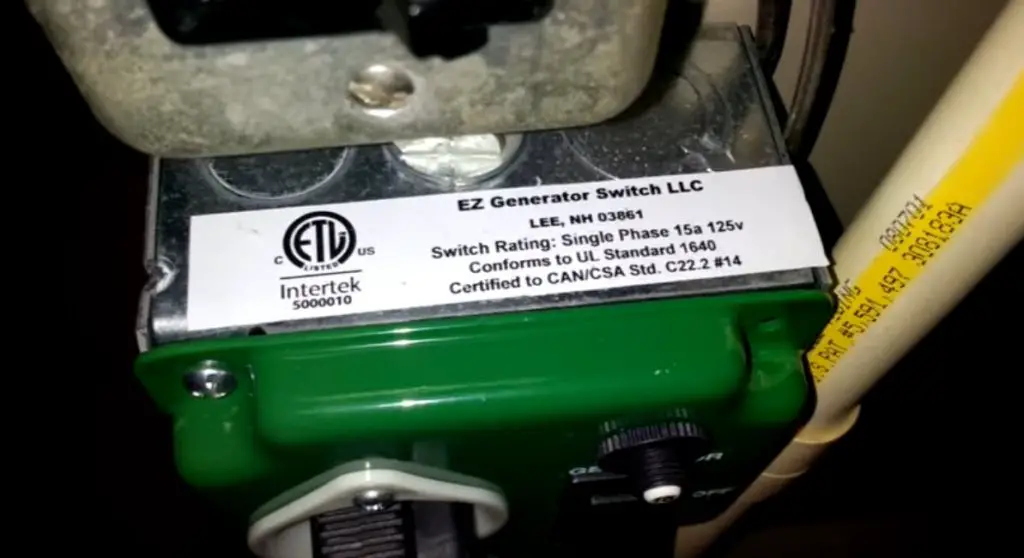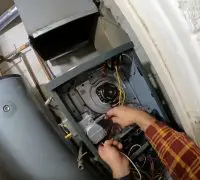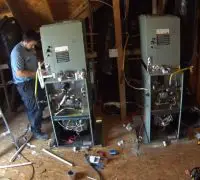Times are changing and people are becoming more aware of the energy they use. Nowadays, it’s common for homeowners to get all the data they need before buying home appliances and devices, huge ones like furnaces. The latter is the top choice for heating homes in the U.S., so there’s plenty of information.
If you’re shopping for a new furnace and collecting data about the energy use of furnaces, the information below will be of much help.
Page Table of Contents
How Many Watts Does a Furnace Use?
Commonly, a furnace’s blower runs from 60 to 900 watts and less than 200 for ECM motors. Old-style motors, the PSC motors, use around 550-700 watts. The information is for the most common blower types and details come below:
- PSC single-speed blower furnace—500-900 watts
- PSC blower, multi-speed furnace—450-800 watts
- Variable motor (ECM motor) with modulating/ two-stage furnace- 90-200 watts, but it can go as high as 600+ watts
These are the numbers for an 80,000 BTUs furnace. The estimates are made with no excessive static pressure with the fan switch in the “ON” position during the heating season for even heat distribution.
Many factors weigh in regarding how many watts a furnace uses. The blower will consume more than 90% of the electricity, but other components (capacitor, control board, switches, and other internal electrical parts) will use a small amount of electricity.
HVAC technicians don’t share the same opinion about how much power a furnace uses to circulate air through the ductwork due to the several factors that impact energy use. Using a wattmeter and running the blower at every speed will show how many watts it is consuming.
Factors that weigh in the watt usage
Let’s take a look at the most critical aspects that impact the energy use with a gas furnace:
Type of motor
The most common blower motor types are the PSC and ECM; each affects the furnace’s energy use.
With PSC motors (permanent split capacitor motors), there are 550-800 watts of energy. These old styles of motors have been in the HVAC equipment industry for decades. They are affordable and use more energy than new models. They cannot generate the same level of climate control as more recent models. Single-speed and multiple-speed PSC motors are available. Furnaces older than ten years are PSC motors. Their energy varies between 40 and 60%.
ECM motors (electronically commutated motors) will use between 90 and 300 watts. Some of these models will use even less than that at their lowest speed (60 watts). ECM motors are variable-speed motors which means they speed up and down in small increments (cruise control) to adjust the furnace’s performance. If you have a new furnace, the chances are it uses an ECM blower.
ECM motors’ efficiency is above 80%. Since they’re complex and highly efficient, they’re more expensive than PSC motors and pricier to replace. However, they’re more dependable than the older models and can run whenever needed.
As of 2019, the U.S. Department of Energy has mandated that all new residential furnaces (and air handlers) have ECM motors.
Size of the Motor
It makes sense that a larger motor will use more energy than a smaller one. Blower motors are available from 1/3 to 1.0 horsepower. To clarify the ECM motors’ energy efficiency, we should mention that even the largest ECM motor uses less energy than a small PSC counterpart.
Typically, the larger the furnace, the larger the motor, but we need to remind you that ductwork size and distance will also come into play for energy use.
Motor Speed
Most PSC motors and all ECM motors are made to operate at various speeds. As a matter of fact, the energy use of the blower motor at its lowest and highest speed can vary from 50% to 500%. The range is even higher than that with ECM motors, whereas PSC motors will differ slightly in energy between their lowest and highest speeds.
Ductwork Pressure
If the ducts have the appropriate size, air pressure will facilitate the furnace’s performance. Air will flow freely, so there won’t be necessary excessive force to push it. However, the blower motor will struggle to run correctly if the pressure is too high.
Inappropriately sized ductwork will make the PSC motors work harder and eventually burn out. They cannot handle the speed as low speed is always low and high speed is always high. Even if ECM motors can manage the inadequate size of the ducts, they will work harder than usual and use more energy. However, the ECM motor will deliver if the system needs 1200 CFM of airflow when performing at total capacity.
Similarly, if the ductwork is sized correctly, the motor will use less energy than if the ductwork is too small and has to keep the 1200 CFM airflow. If you want your furnace to be efficient, dependable, and long-lasting, the ductwork has to be sized appropriately.
Setting on the ECM Motor
It’s possible to program ECM motors to run at a certain speed or range of speeds and voltages. A certified HVAC technician will tune the motor to move the proper amount of air through the system to improve indoor temperature and humidity. It’s yet, another reason the ECM motor will use varying amounts of energy according to the settings.
Length of Cycles
You don’t need to be an experienced HVAC professional to know that the longer the motor runs, the more energy it will use, whether it’s an ECM or PSC motor.
Regular heating cycles should last 8-15minutes, depending on the outside temperature vs. indoor temperature, the house’s insulation, the thermostat setting, and whether the system is in the Heat or Cool mode. Therefore, there should be 2-4 cycles per hour. In the coldest winter, the furnace will run more often and for longer cycles. We can safely say that the blower motor will run 35-40 minutes per hour.
All in all, ECM motors will perform more efficiently than PSC motors and use 50-75% less energy. PCM motors use 500 to 900 watts, whereas ECM motors use 90 to 300 watts. When something’s wrong, the ECM motor will use as much as 600 watts.
Should your electric bills get higher than usual, something might be wrong with the ECM motor. We suggest you call a certified HVAC technician to assess the situation. Don’t forget that the motor isn’t the only furnace component that uses energy; other parts use energy too.
Commonly, the highest energy savings come from the efficiency of your equipment. High-efficiency furnaces are available and you should look into them if you don’t own one already.
How many watts do electric furnaces use?
According to the model, electric furnaces typically use 10,000 to 50,000 watts of electricity. Electric furnaces in traditional residential homes will use around 20,000. The most model will use 60-80amps and connect to a 220 Volt breaker.
We should highlight that furnace are also expected to have a lower “running” wattage than the stated wattage as they cycle on and off. Electric furnaces might operate on and off 2-3 times every hour for 15-20 minutes at a time (35 minutes in an hour). Therefore, a 20,000 W electric furnace will only use around 13,000 W every hour.
Electric furnaces are better options than gas models in some parts of the U.S. In the Southeast and Southwest regions, electric furnaces make for the popular choice and the furnaces will run only for a few hours per day. Therefore, they perform for around two hours a day.
The electricity an electric furnace uses depends mainly on the time it runs. The numbers are for 20,000 W furnaces that use 13,000 W:
- 1 hour- 13kwh of electricity used
- One day- 26kwh of electricity used
- One week—182kwh of electricity used
- One month—789kwh of electricity used
- One year—3,163 kWh of electricity used
Various wattage electric furnaces will use varying amounts of electricity throughout the year. To save on electricity, you should consider installing solar panels.






